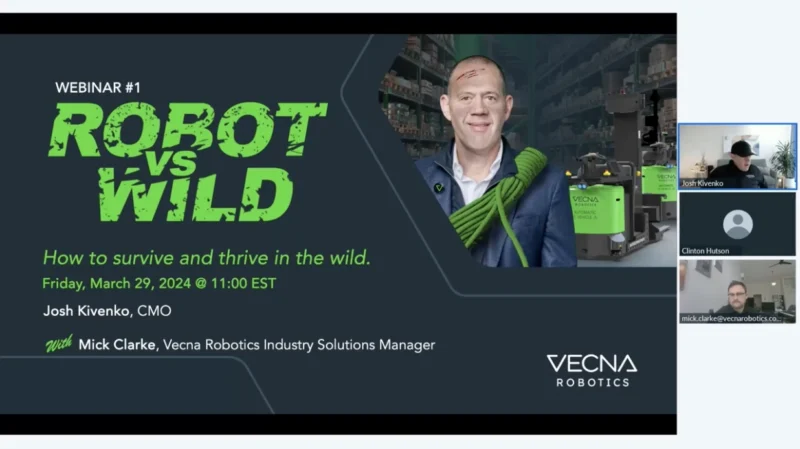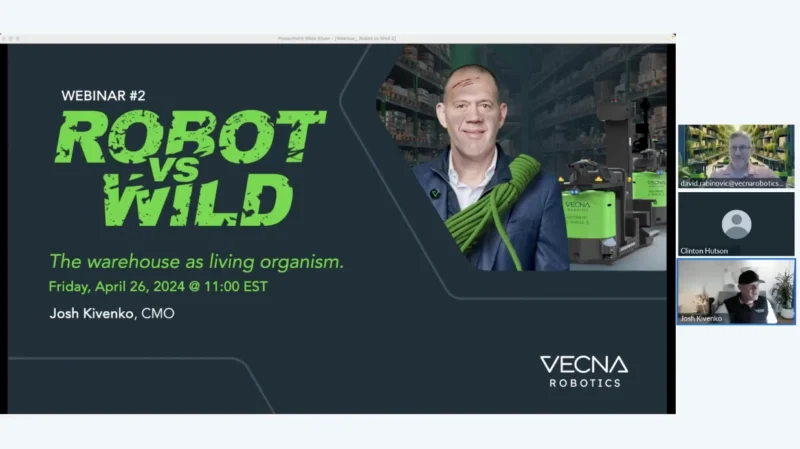Vecna Robotics Powers Scalable Warehouse Automation Through Human-in-the-Loop Support
Warehouse automation is no longer a fringe concept—it’s accelerating fast. According to McKinsey, robot shipments are expected to grow by as much as 50% annually through 2030, and warehouse automation spending is rising by over 10% each year. As companies race to modernize operations, it’s becoming clear that real performance doesn’t come from hardware alone——it’s the human-in-the-loop support systems that make the difference.. Whether it’s navigating supply chain disruptions or handling seasonal spikes, human-led oversight is what turns automation into a reliable, scalable advantage.
So, how do leading organizations ensure robots perform at their best, even when humans aren’t on the floor?
In the sixth episode of Robot vs. Wild, Vecna Robotics’ Chief Marketing Officer Josh Kivenko sits down with Nikki Slaughter, Director of Post-Deployment Operations, to explore the critical human support infrastructure behind autonomous systems. Together, they unpack how Vecna’s always-on remote team—its “pit crew”—continuously optimizes robot performance through human-in-the-loop decision-making, ensuring safety and adapting operations in real time to customer needs.
In this episode, you’ll learn:
-
Why Vecna’s 24/7 Pivotal Command Center is essential for scaling automation, providing rapid remote assistance that outperforms traditional on-site support.
-
How real-time robot monitoring leads to personalized, data-driven adjustments that improve flow, throughput, and reliability.
-
The role of human-in-the-loop support in enabling safe experimentation—from lights-out automation to adaptive charge cycle management.
Nikki Slaughter is the Director of Post-Deployment Operations at Vecna Robotics, where she leads remote support and technical documentation teams to ensure scalable, high-performing automation solutions across industries such as automotive, food and beverage, and medical supply logistics. She brings over a decade of experience in robotics, AGV systems, field service, and R&D leadership, having previously managed implementation and validation teams in both warehousing and renewable energy sectors. Passionate about operational excellence and cross-functional collaboration, she also advocates for diversity in STEM through ongoing mentorship and outreach.




